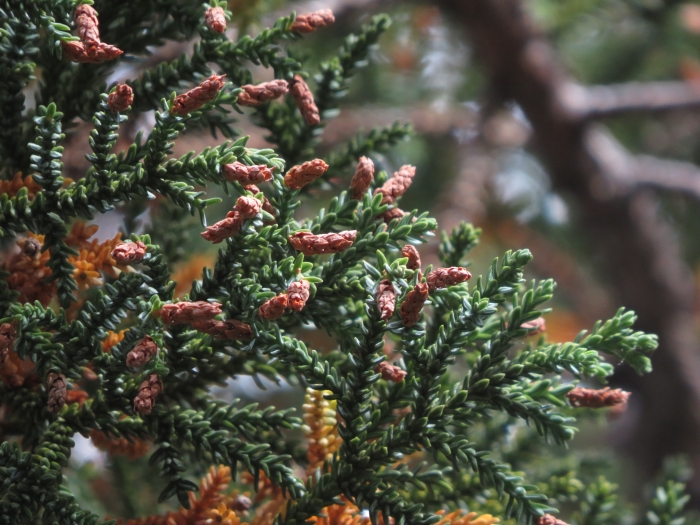Patagonian Cypress
(Fitzroya cupressoides)
Patagonian Cypress (Fitzroya cupressoides)
/
/

Ezequiel Vera
CC BY 4.0
Image By:
Ezequiel Vera
Recorded By:
Copyright:
CC BY 4.0
Copyright Notice:
Photo by: Ezequiel Vera | License Type: CC BY 4.0 | License URL: http://creativecommons.org/licenses/by/4.0/ | Rights Holder: Ezequiel Vera | Publisher: iNaturalist | Date Created: 2023-01-10T17:30:13-08:00 |



















Estimated Native Range
Summary
Fitzroya cupressoides, commonly known as Patagonian cypress, is a long-lived evergreen conifer native to the temperate rainforests of the Valdivian and Magellanic subpolar forests in the southern Andes of Chile and Argentina. It is one of the tallest trees in South America, reaching up to 197 feet (60 meters) in height with a trunk diameter of up to 16 feet (5 meters). The tree’s form is typically straight and columnar with a pyramidal canopy, which provides cover for an understory of southern beech, laurel, and myrtle. Its bark is thick and furrowed, an adaptation to protect against wildfires. The foliage consists of scale-like leaves, and while the tree is not known for showy flowers, it does produce small cones.
Patagonian cypress is notable for its longevity and massive size, with the oldest known specimen, "Alerce Milenario," being over 3600 years old. It is valued for its durable, decay-resistant wood, which has historical importance in trade. However, due to overexploitation, it is now a protected species. In cultivation, it is used for reforestation projects and as an ornamental tree in large gardens and parks. It requires moist, well-drained acidic soils and thrives in cool, humid climates with full sun to partial shade. Patagonian cypress is slow-growing and can be difficult to propagate, but once established, it is relatively low maintenance.CC BY-SA 4.0
Patagonian cypress is notable for its longevity and massive size, with the oldest known specimen, "Alerce Milenario," being over 3600 years old. It is valued for its durable, decay-resistant wood, which has historical importance in trade. However, due to overexploitation, it is now a protected species. In cultivation, it is used for reforestation projects and as an ornamental tree in large gardens and parks. It requires moist, well-drained acidic soils and thrives in cool, humid climates with full sun to partial shade. Patagonian cypress is slow-growing and can be difficult to propagate, but once established, it is relatively low maintenance.CC BY-SA 4.0
Plant Description
- Plant Type: Tree
- Height: 50-130 feet
- Width: 10-20 feet
- Growth Rate: Slow
- Flower Color: Non-Flowering
- Flowering Season: Winter
- Leaf Retention: Evergreen
Growth Requirements
- Sun: Full Sun
- Water: Medium
- Drainage: Medium
Common Uses
Low Maintenance
Natural Habitat
Temperate rainforests of the Valdivian and Magellanic subpolar forests in the southern Andes of Chile and Argentina
Other Names
Common Names: Alerce, Patagonian Cypress, Lahuán, Lahuan
Scientific Names: , Fitzroya cupressoides, Abies cupressoides, Cupresstellata patagonica, Fitzroya patagonica, Fitzroya patagonica, Libocedrus cupressoides, Pinus cupressoides,
GBIF Accepted Name: